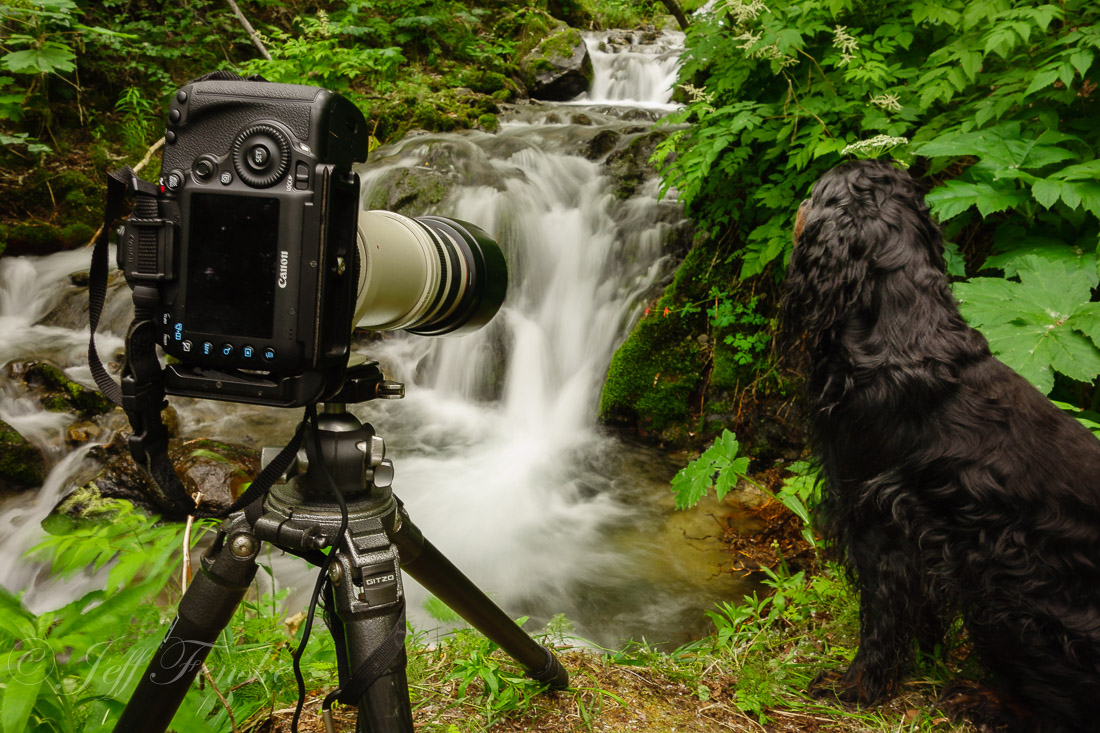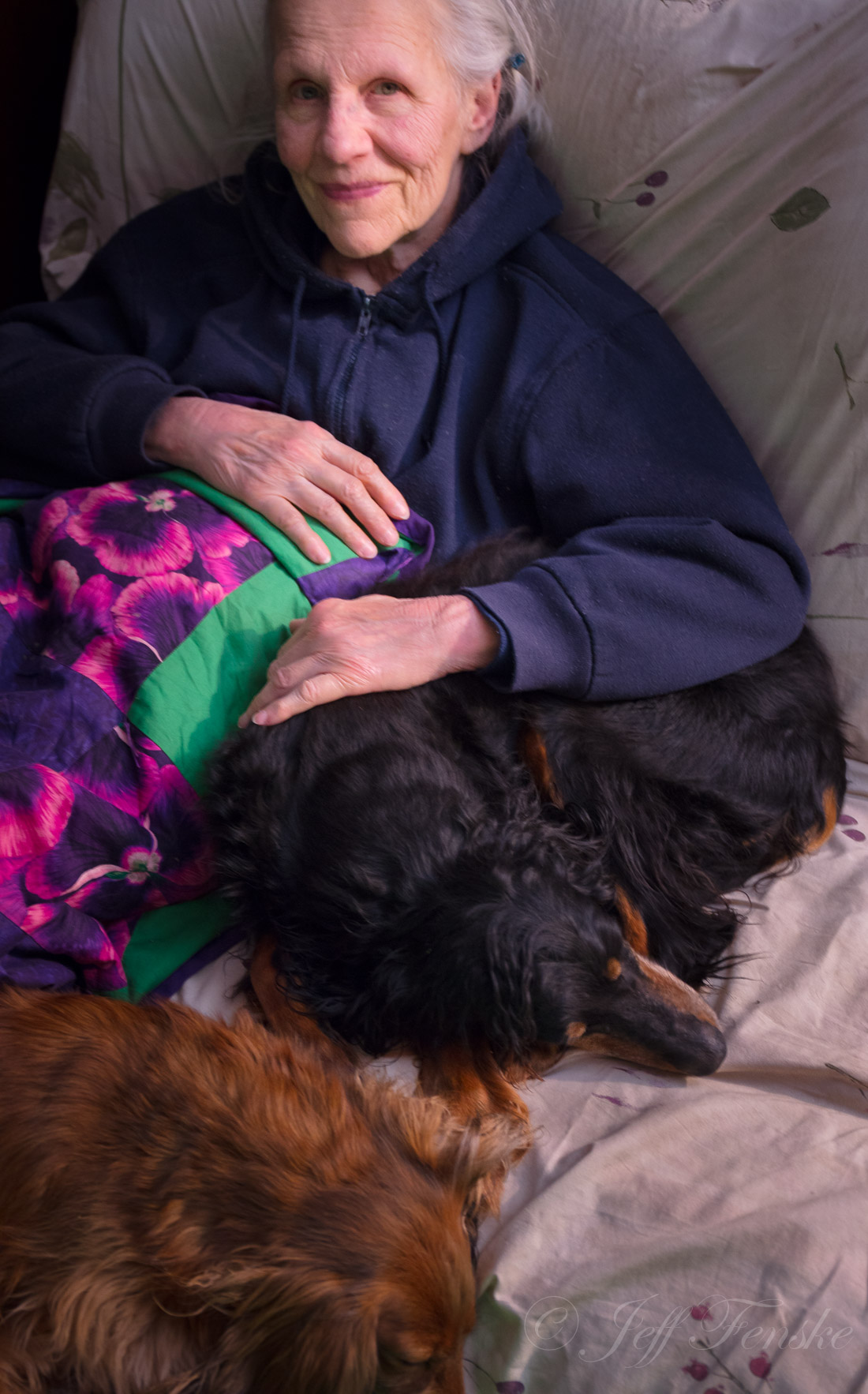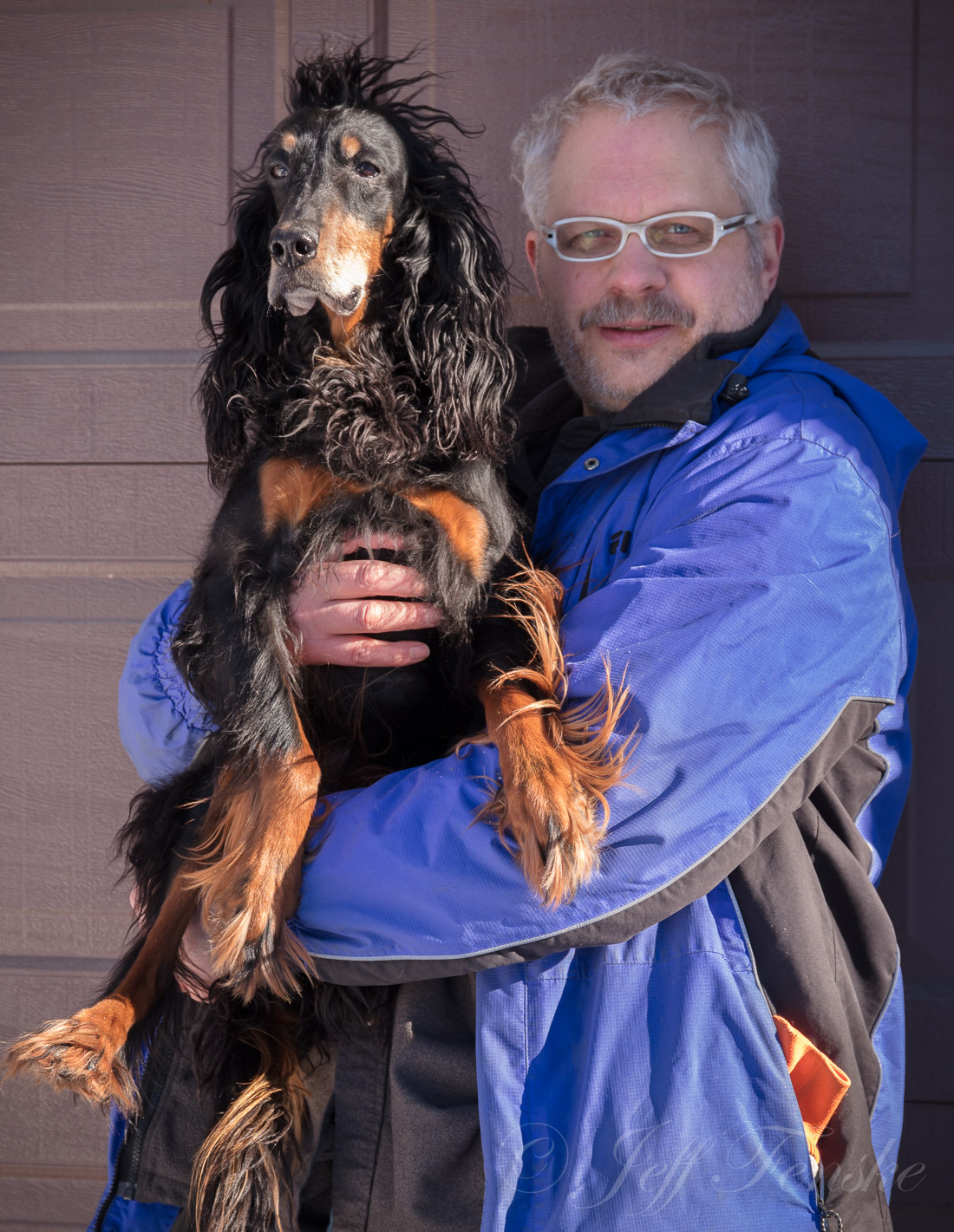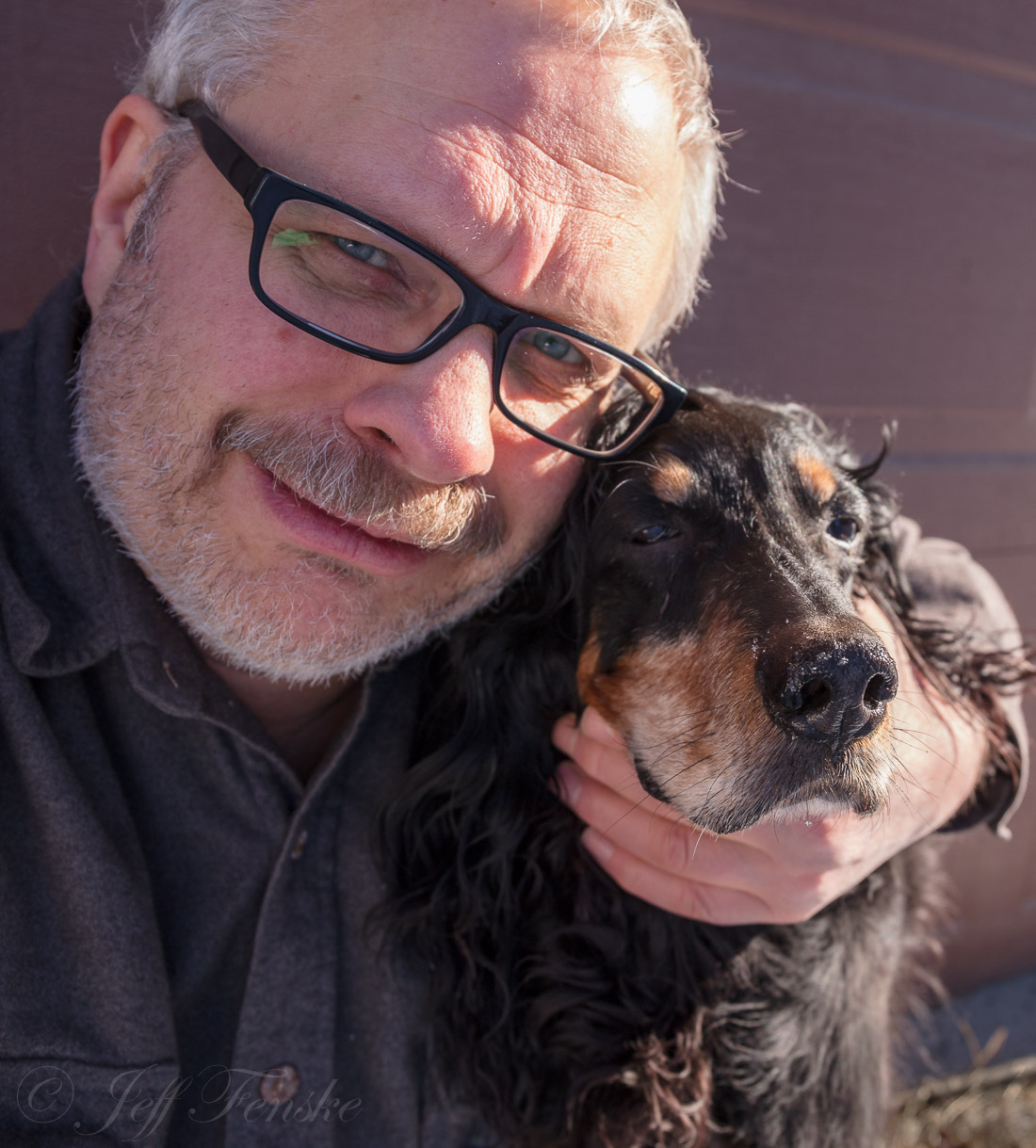Kelly, my boy dog (breeders named him after the clown Emmett Kelly) died today (3/3/17) at age 10 (born 6/30/06). Little did I know that when I first met him during this visit to a kennel (photo below), that he would become my dog about a month later. I already had another Gordon Setter, William Wallace at the time, who died 1.5 years ago (10/9/15). Both died from heart failure. Ugh!
I fell in love with Setters while reading Jim Kjelgaard’s Irish Setter books as a teen, and ended up getting an Irish Setter, who I named Harvey. I had to leave him with my parents when I moved to Montana and Alaska in 1980. After Dad died, Mom moved to Alaska and bought a house, so I could again have Setters, starting in 1993. This time, we bought Gordon Setters (Mom got a girl), and we’ve had one or two ever since, until today.
When I met Kelly at the kennel I was visiting in the lower-48, I was playing with and taking photos of the male dogs in the very large fenced-in area. I laid down on the ground, face up, to capture a different perspective. All of a sudden, a dog laid on my chest, and got right up again, which surprised me because this isn’t typical Gordon behavior. This one was also the most interactive with the camera too, as the photo below shows. He was only 33 pounds.
Afterward, I asked who that dog was, and found out that Kelly had failed their hunting dog standards, so was basically stuck in the kennel as they couldn’t find a home for him. I wasn’t looking for another dog, but a month later, they suggested I take Kelly for free, as long as I paid the costs to get him to Alaska.
I had no idea how much trouble he would be, having never had a dog with serious issues before, including chewing steering column control levers & etc. in our cars.
Kelly was a true rescue dog. He had teeth that couldn’t close against each other properly, so he had trouble chewing food, which they didn’t tell me about. He had some type of ADD, which they didn’t tell me until later, and that they had considered him a troublemaker. Three long years in the kennel with too harsh discipline and hardly any TLC made him extremely wary of women. A woman was in charge of the kennel, and she later told me how she had treated Kelly, when I asked her advice on what to do. It took him YEARS to warm up to Mom, despite Mom being so sweet! And at first, he wouldn’t look me in the eye, and had a mind of his own. He was a bird addict, including smaller ones that sporting dogs aren’t supposed to be interested in. While riding in the car, he constantly scanned the sky, looking for birds with great excitement, as if he actually would have the chance to catch them. And often, while I was photographing nature, he would spend the entire time trying to catch birds, sometimes getting into the picture. I’ll post some of those, now that he can’t be James-3 cursed anymore. I learned this the hard way with a previous Gordon who suddenly acquired and died from lymph cancer at age-5, after using her photo as my profile image on my blogs.
He’s the first dog I’ve had who would go off on his own during walks but then would too often get lost, being unable to find me. I would have to find him, and usually could within 20 minutes, but a few times it was more like an hour? The beeper collar helped; though, only worked at close range.
Mom has often said how he found the perfect home, because we had the patience and love to work through all of his special problems.
In his later years, he let himself actually miss me a lot when he got lost, and he’d let the world know it by barking. And after William Wallace died, we got very tight. He would almost always be where I would be in the house. At the computer, he’d be by my feet; watching TV, nestled by my side on the couch — or sometimes next to Mom. That took so long! Mom grew to really love him too. His hair was so soft, Mom would say: “like velvet.”
And he was the most hands on dog I’ve ever had. He used his paws like hands in ways. For example, if I didn’t respond to his walking to and from the door right away, he’d touch me with his paw. He was also the only Gordon to sleep right next to me at the top of the bed, not the bottom.
I’m recalling some key moments:
I watched when Kelly saw his first moose in our yard, who sometimes forage on our trees. In the kennel, they had a full grown horse. Apparently, they were friends, because Kelly went right up to the moose, but the moose kicked him. I couldn’t tell if the hoof made contact, but probably did, because Kelly never did that again.
He could sometimes appear vicious, such as when certain people walked by the house on the street. I had such a hard time getting him not to bark without me having to tell him not to, each time. The breeder is the one who later told me he’s ADD, which I don’t understand, but saw it in action.
And he never did learn how to be completely sociable with other dogs he would meet on the trails. Unlike any dog I’ve ever had, he would often go off-trail to avoid them, but some chased him anyway, which he didn’t like.
He really learned to trust me. Twice, he found porcupines and came back with DOZENS of quills sticking out of him. He allowed me to remove them with a pliers even from the inside of his mouth — no problem; even though, it must have really hurt — especially one. It must have been in the tender nail bed of his toenail, for when I pulled it out he snapped at my hand — and was still okay with me pulling the rest out. That was the only time he ever snapped at me. Many dogs wouldn’t have allowed that, which then requires an expensive vet bill.
I’m guessing that Kelly learned his lesson with the porcupines, because there never was a third time; though, I started to avoid photographing in areas where he’d most likely encounter them, or tried to keep him near the water and out of the woods in these areas. I also bought a small, collapsible pliers which I’ve carried in my pocket ever since, so we wouldn’t have to wait until we got back to the car. I’ve read that removing them right away makes it easier, but thankfully, I never had the opportunity to test this theory.
Incidentally, my previous photo buddy, William Wallace also had two major porcupine encounters during his life, so maybe that’s how many it takes, and Kelly was no different this time?
I affectionately often called him Kells, after the “Book of Kells.”
So my most problematic dog ended up being in some ways my favorite.
I’ll miss you, Kelly.
When-I-first-met-him post reposted below:
I thought I’d post a photo from my recent trip to California and Oregon. …
This one is so cool! What a riot!
God bless!
Jeff : )



Notice how small his foot is. I took this with the widest possible, non-fish-eye lens (Sigma 12-24mm at 12mm on a Canon 5D Mark II), which gives this perspective. His face and paws are very close to the lens. And that’s my foot at the bottom of the image. May 5, 2009
Related:
Kelly’s Last Day
(photo) Kelly – The Last Hug










